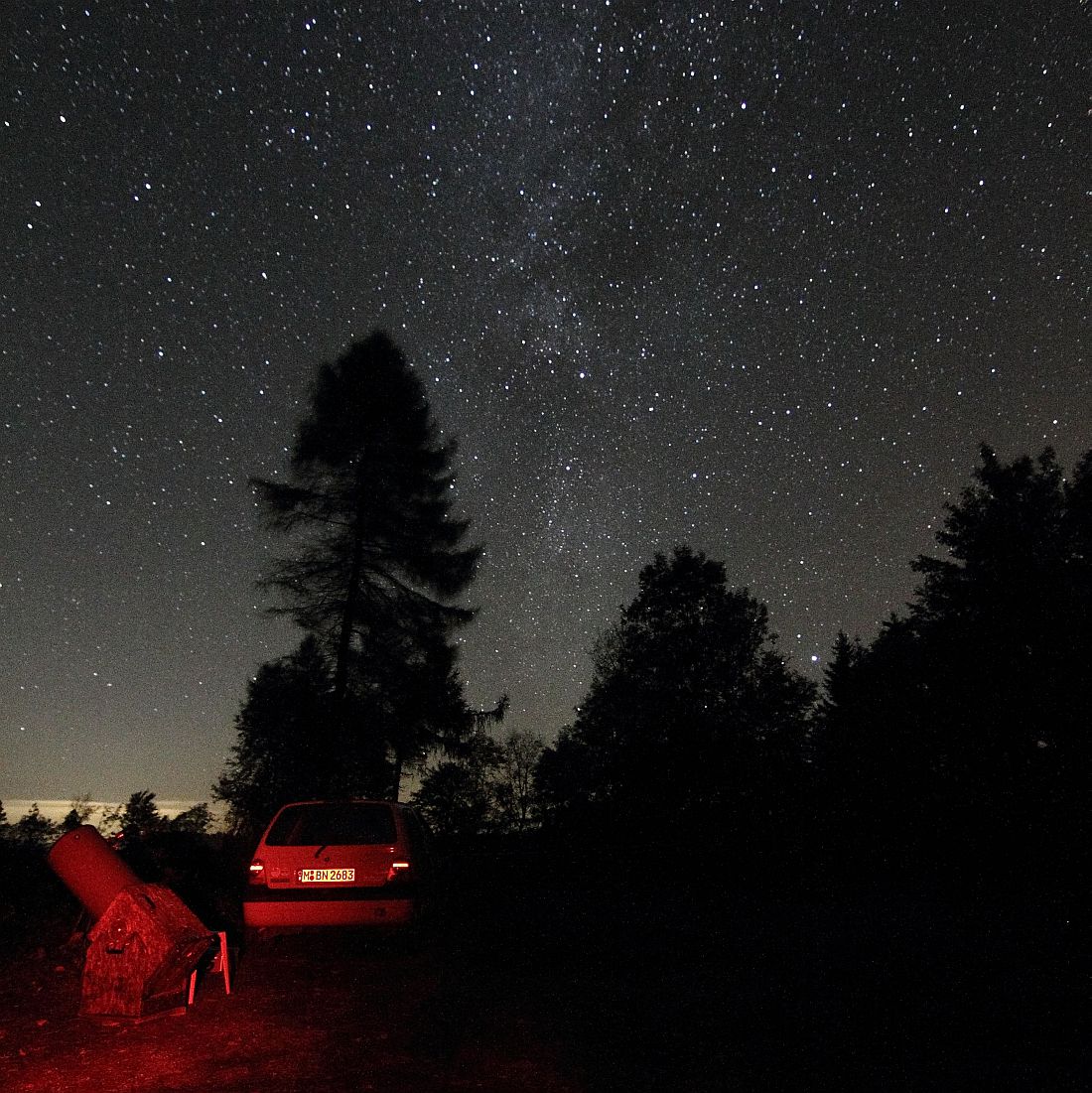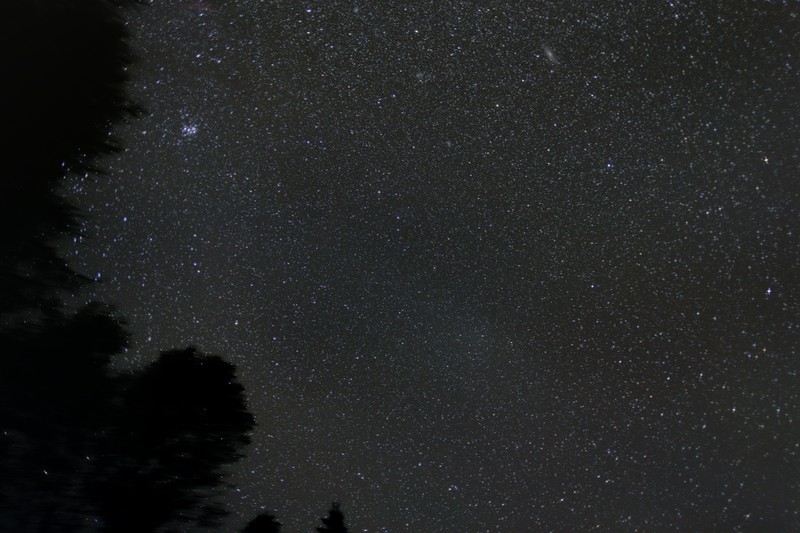2:58 CEST: A free horizon to the South and Southwest

View to the West

It did not clear up before 2:00 in the morning, and I managed to sleep for some hours in my car before; so I had full energy
to observe till dawn, with the fine planetary parade.
2:58 CEST: A free horizon to the South and Southwest
|
View to the West
|
With my 10-inch I made a travel in the border area of Andromeda, Perseus and Triangulum: From the superb color-contrast double Alamak to NGC 891
(the dark band discerned all along, more distinct in the middle), the galaxy cluster Abell 347 with NGC 910 (four of the galaxies distinct), the high surface
brightness galaxy NGC 1023, the open cluster M34, the Perseus galaxy cluster with NGC 1275 (several objects visible), the color-contrast double 15 Tri,
the galaxy NGC 925, the scattered cluster NGC 752 and the tight galaxy pair NGC 750/51. Moreover additional galaxy clusters like the NGC 7619/7626-
NGC 83- and NGC 691 groups - the latter group loosely clustered around the relatively tight color-contrast double 1 Arietis. And a journey to the Milky
Way in Cassiopeia and Perseus, with a special focus on the red supergiants in NGC 457, M103 and h+Chi in Perseus (in the latter five of these stars.)
Great also the famous galaxies M31 and M33; in M33 the spiral structure was very obvious,with some knots well seen.
About 4:30 I put the 10" back into the car, and made a hike - only with binoculars and camera - to the old inner-German border, less than one kilometer away.
Here was a free horizon, important for the planets. As a historical monument, a former GDR watchtower and some segments of the barbed wire fence had
been left over here - before 1989 there had been a continuous fence, erected by the East German communist state, between the two Germanies. The next
one and a half hours I leasurely observed the planets rising together with the Lion, until eventually the sickle of the moon, and later - already in a brighter
dawn sky - Mercury arrived on the scene. A very nice event !
4:59 CEST : On the former border patrol path of East Germanyf.l. Ursa Major and the rising Lion; with Jupiter, Mars and Venus
|
6:26 CEST: Lion & planets in the dawnf.r. desc. Venus, Mars, Jupiter, Moon and Mercury
|
Impressions with a watchtower ...
|
... and remnants of the fence
|
Cranes on their way to the warmer South
|
Wide landscape on a high plateau
|
The former border is a now part of the "Green band"- now a hiking trail through Germany
|
At the former fencef.l Horia, Friedhelm and Ben
|
On the way ...
|
... to the the "Black Moor"
|
It was clear from the beginning, and we could also discern the "Gegenschein"
Friedhelm at my 10-inch ...
|
... and Horia at his 18-inch
|
Friedhelm began with the pair NGC 6712 (globular cluster) and IC 1295 (planetary nebula) in Scutum, at first in the 10-inch, and afterwards also in the 18" -
an interesting comparison; without filter, the hole could only be suspected. And it was galaxy time in the big Dobson: We could see several single galaxies in
the clusters around NGC 1275, NGC 383 and NGC 507; moreover four galaxies in the direct vicinity of NGC 7331, and also leasurely the five members of
Stephan's Quintett. We also saw the interesting group NGC 470/474, and NGC 770 or NGC 7479 with the single spiral arm. And also highlights like the dust
lane galaxy NGC 891, the "Fetus nebula" NGC 7008 - Horia was very impressed - or the "Crescent nebula" NGC 6888 - all great in the 18" in these good skies !
It was a both concentrated and relaxed observing night - very nice :)
One can also discern the star clusters M34 and NGC 752, plus the galaxy M33.

22:30 CEST
|
1:26 CEST
|
Already on the way home: Indian summer ...
|
... in the Rhoen mountains
|